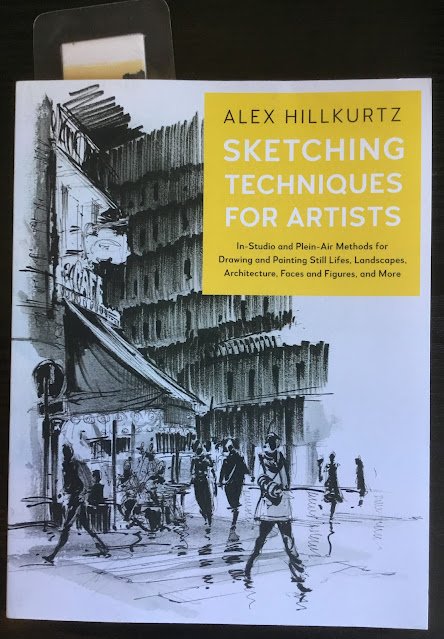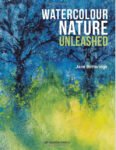Time to review the other urban sketching book that I bought on Christmas Day. This…

Sketching Techniques For Artists: Alex Hillkurtz – Book Review
In the end I got eight books for my birthday. Six of them are already here in front of me; two aren’t published until August, so I know exactly which ones they are.
First up for review is this one by Alex Hillkurtz. It’s a 144 page paperback. Initial impressions are that it feels good in the hand. It has one of those slightly sticky feeling covers like the Charles Reid books. Just taking a quick flick through, though, it looks a little light on content with not too many words, but we’ll see.
We have about 65 pages of general stuff, 55 pages of subject matter specific tips and about 20 pages on watercolour. In that first 65 pages there’s the usual stuff about equipment and about composition, but also a really interesting chapter on choosing what to paint and from what angle, something I don’t think I’ve ever seen discussed in a book. And there’s probably the best explanation of one, two and three point perspective that I’ve ever seen; stuff that I already knew about but also including at least one useful tip that I’ll be taking on board.
Then we have the subject matter chapters on still life, landscapes, architecture and figures. The chapters in architecture and landscapes were the most interesting but the other two felt a bit like padding. Maybe this was because the more general chapters in that first 65 pages were very buildings focused. I get the feeling Alex may have started writing a book about sketching buildings, came up a bit short on pages and was faced with the choice of extending it to drawing and painting buildings (with lots more detail on painting) or extending it to sketching generally (with some extra bits on still life, people and hills thrown in). I might have preferred the first choice but we’ll never get to see how that would have turned out.
And then there was the closing chapter on watercolours, which did include a couple of interesting ideas.
But all the talk above about the content of the book doesn’t do it justice because it leaves out what makes this book different. And that is the overall tone/message/feel of it. In terms of tone, this book slips down like a half melted cornetto. It’s tempting to read through it all really quickly but you instead have to force yourself to slow down and take in every point. Alex’s passion comes through on every page too, and that includes even in the chapter on perspective, which could have been very dry in the hands of a different writer.
And there’s an overall message/theme coming through from this book. Which is that sketching isn’t just about getting what’s in front of you down on paper. You also need to show the personalities of the buildings and trees. You need to show what the buildings and trees are doing. You need to record the gestures in front of you. Each person in the painting needs to have their own story. We’re composing a poem in light in the same way as a symphony is a poem in music and a film is a poem in, oh, whatever. This all sounds very weird but it comes through on every page of the book. It’s what this book is really all about: adopting a new mindset.
Overall, this book ended up exceeding the expectations I had from that first flick through. It’s very well written, full of passion and relentless in how it tries to change our ways of thinking. There are some interesting tips on there that I’ve not seen before, albeit not that many. But I can recognise how this book does make me think differently. I think it’s worth three palettes (remember this is a good score and means that the book is definitely worth buying).
🎨🎨🎨
You can find this book and more reviews of it at Amazon UK here. As an Amazon Associate, I earn commission from qualifying purchases but this costs absolutely nothing extra to you.








Leave a Reply